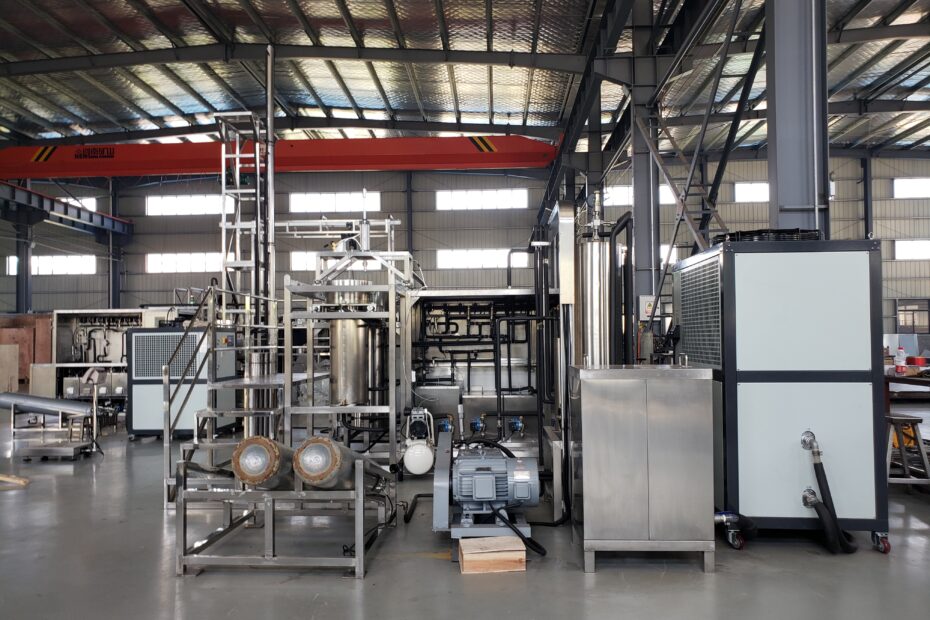In the realm of extraction techniques for botanicals and natural products, Supercritical CO2 extraction and Ethanol extraction have emerged as two prominent methods. These processes offer distinct advantages and applications in industries such as pharmaceuticals, food and beverages, and cosmetics.
Understanding Supercritical CO2 Extraction
Principle:
Supercritical CO2 extraction involves utilizing carbon dioxide (CO2) in a supercritical state as a solvent to extract desired compounds from plant materials. Under specific temperature and pressure conditions, CO2 becomes supercritical, exhibiting properties of both a liquid and a gas. In this state, CO2 can efficiently penetrate plant material, dissolve target compounds, and extract them without leaving behind solvent residues.
Process:
The extraction process begins by pressurizing CO2 to reach its supercritical state. The supercritical CO2 is then passed through a chamber containing the plant material, where it dissolves the desired compounds. Next, the CO2 containing the extracted compounds is depressurized, causing the CO2 to revert to its gaseous state and leaving behind the extracted substances. The resulting extract can then be collected for further processing.
Advantages:
- Selective Extraction: Supercritical CO2 extraction allows for the selective extraction of target compounds while leaving undesirable components behind.
- Solvent-Free: CO2 is non-toxic, non-flammable, and readily available, making it a safer and environmentally friendly solvent choice.
- Minimal Thermal Degradation: The low operating temperatures of Supercritical CO2 extraction minimize thermal degradation of heat-sensitive compounds, preserving the quality of the extracted materials.
Understanding Ethanol Extraction
Principle
Ethanol extraction involves using ethanol (ethyl alcohol) as a solvent to extract compounds from botanicals. Ethanol is capable of dissolving a wide range of compounds, including cannabinoids, terpenes, and flavonoids, making it suitable for extracting various plant materials.
Process:
In Ethanol extraction, the plant material is soaked or immersed in ethanol to allow the solvent to dissolve the desired compounds. The ethanol acts as a solvent, breaking down cell walls and extracting the target constituents from the plant material. After sufficient extraction time, the ethanol extract is separated from the plant material, typically through filtration or centrifugation. The ethanol extract is then subjected to further processing to remove impurities and concentrate the desired compounds.
Advantages:
- Versatility: Ethanol extraction is capable of extracting a wide range of compounds, including both hydrophilic and lipophilic substances.
- Cost-Effectiveness: Ethanol is relatively inexpensive and readily available, making it a cost-effective solvent choice for extraction processes.
- Scalability: Ethanol extraction processes can be easily scaled up to accommodate large-scale production requirements, making it suitable for industrial applications.
Comparative Analysis :Supercritical CO2 Extraction and Ethanol Extraction
To facilitate a better understanding of the differences between Supercritical CO2 extraction and Ethanol extraction, let’s examine their key attributes in a comparative table:
| Attributes | Supercritical CO2 Extraction | Ethanol Extraction |
|---|---|---|
| Solvent | CO2 | Ethanol |
| Selectivity | Highly selective | Selective |
| Safety | Non-toxic, non-flammable | Flammable |
| Environmental Impact | Minimal | Moderate |
| Equipment Complexity | High | Moderate |
| Extraction Efficiency | High | Moderate to High |
| Operating Cost | High | Moderate |
| Regulatory Considerations | Stringent regulations due to high pressure equipment | Less stringent regulations |

Applications Comparative of Supercritical CO2 Extraction and Ethanol Extraction
Supercritical CO2 Extraction
- Pharmaceutical Industry: Supercritical CO2 extraction is commonly used in the pharmaceutical industry for extracting active pharmaceutical ingredients (APIs) from botanicals for drug formulation.
- Food and Beverage Industry: In the food and beverage industry, Supercritical CO2 extraction is utilized for extracting flavors, aromas, and bioactive compounds from natural sources for use in food products and beverages.
- Herbal Supplements: Supercritical CO2 extraction is preferred for producing high-quality herbal supplements due to its ability to selectively extract target compounds while preserving their bioactivity.
Ethanol Extraction:
- Cannabis Industry: Ethanol extraction is widely used in the cannabis industry for extracting cannabinoids and terpenes from cannabis plants to produce concentrates and extracts.
- Herbal Medicine: Ethanol extraction is employed in the extraction of medicinal compounds from herbs and botanicals for use in traditional herbal medicine preparations.
- Flavor and Fragrance Industry: Ethanol extraction is utilized for extracting aromatic compounds from botanical sources for use in perfumes, cosmetics, and flavorings.
Conclusion
In conclusion, both Supercritical CO2 extraction and Ethanol extraction offer unique advantages and applications in the field of botanical extraction. While Supercritical CO2 extraction provides high selectivity, safety, and minimal environmental impact, it comes with higher equipment costs and complexity.
On the other hand, Ethanol extraction offers versatility, cost-effectiveness, and scalability, albeit with some safety and regulatory considerations. By understanding the differences between these two extraction methods and their respective suitability for specific applications, industries can make informed decisions to optimize their extraction processes and product quality.
